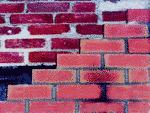veneer
[və′nir]Veneer
veneer
Veneer
wood in the form of thin sheets obtained by peeling off short logs on veneer peeling machines (rotary-cut veneer), slicing logs on veneer-cutting machines (sliced veneer), and sawing on veneer-sawing machines or gang mills (saw cut veneer).
Saw cut veneer (1–10 mm thick) is made from spruce, Nordmann’s fir, and Siberian stone pine. The highest quality veneer, it is used to make the soundboards of string instruments. The production of saw cut veneer entails substantial losses of wood in saw dust; the usable output of veneer is not more than 40 percent of the raw material.
Rotary-cut (0.1–10 mm thick), the most common variety of veneer, is made from birch, beech, oak, spruce, alder, aspen, pine, and other tree species. It is widely used to make plywood, plywood sheets, laminated wood plastics, and other types of laminated wood. Other uses include the decoration of cabinetwork, the production of matches and matchboxes, and the manufacture of separators for lead electrical accumulators.
Sliced veneer (0.2–5 mm thick) is produced from acacia, beech, oak, elm, chestnut, walnut, yew, ash, Karelian birch, mahogany, and other fine woods that have attractive grain. The desired decorative effect of the grain exhibited by different sections of the wood determines the direction of slicing. Several types of sliced veneer are distinguished on this basis, with radial, radialtangential, tangential, and tangential-face cuts. Sheets sliced from one log in sequence are packed in bundles in the order of slicing to help select veneer by color and grain. Sliced veneers are used in cabinetwork.
The growing scarcity of fine wood and the difficulty of artificially reproducing a texture equivalent in decorative effect to natural wood grain have encouraged the development of thin and ultra-thin (0.08–0.15 mm) veneers of fine woods and the improvement of the natural grain of the wood of ordinary species by special treatment (slicing on an angle to the longitudinal axis of the trunk, wavy slicing and peeling, conical peeling).
REFERENCES
Spravochnik fanershchika, 3rd ed. Moscow, 1968.Proizvodstvo lushchenogo i stroganogo shpona. Moscow, 1970.
Kanashkin, I. A. Proizvodstvo tonkogo lushchenogo shpona. Moscow, 1974.
I. K. CHERKASOV
